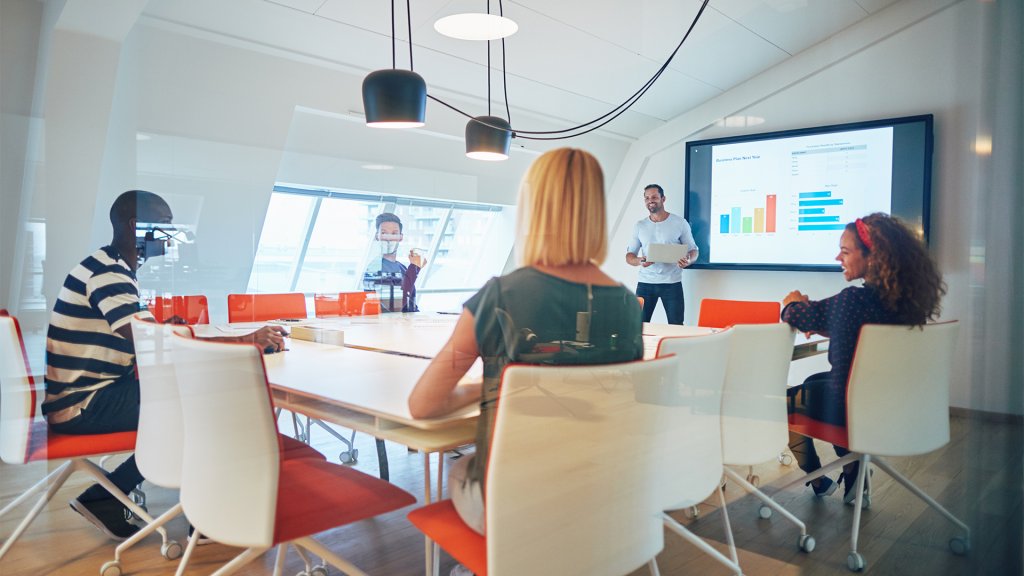As the new decade dawns, those responsible for designing and delivering modern workplace environments – be it brand new office builds or modernizing refreshes – will want to know what tools they have at their disposal. Fortunately, as the saying goes, the future is already here; it’s just unevenly distributed. So, let’s have a look at what allows cutting-edge workplaces to operate effectively.
A Fluid Workplace For the Modern Worker
You may have visited a co-working space stuffed full of start-ups or the campus of an established tech company. Perhaps it was the headquarters of a forward-thinking financial institution. If so, you will have noticed how different it was from the typical 20th-century workplace.
The free-flowing, visually impactful, and technology-enabled design of such spaces hasn’t transpired by accident. Today’s ‘digital native’ knowledge workers can – and often do – work from anywhere. Many may only be on site sporadically. Others may work from different corporate offices in the same city, country, or region. And others may only ever visit an official workspace to meet with colleagues or freelancers they have recruited for specific projects.
In short, fewer employees work at the same desk, in the same office for years on end meaning that the workplace experience needs to be seamless no matter where they’re answering their emails.
Navigating Unfamiliar Territory
Contemporary workplaces have plenty of upsides, but they can be challenging to navigate.
It’s all very well to have casual encounters on majestic stairwells or in funky communal seating areas. But what happens when you need to find a quiet corner to analyze the monthly revenue figures? Or you need to secure a conference room to give a presentation in? Or you want to invite your colleagues to an impromptu lunchtime yoga class? Finding the right space quickly enables the modern worker to collaborate and share with others more efficiently.
A Workplace GPS and Bulletin Board
If you haven’t spent much time in contemporary workspaces, you might not have paid much attention to their wall-mounted screens.
But it’s those screens – or, more precisely, the software platform sitting behind those screens – that allows people to locate their co-workers, secure meeting rooms, broadcast corporate announcements, and advertise social activities, among countless other uses.
Without their digital signs, room scheduling panels, and information kiosks, many offices built over the last decade would be little more than endless labyrinths. Even older office structures have now retrofitted digital signs and a plethora of other workplace solutions to introduce efficiency gains in how employees utilize the workspace, adapting to the demands of today’s workers.
What Software Platform is Right for Your Organization?
If you or your organization have not invested in modern workplace technology already, the next twelve months will almost certainly see your staff, customers, and investors seeing digital signage and other solutions as a necessity. These tools drive productivity and help you avoid unflattering conclusions about your organization if it’s not baked into your workplace experience. Culture is king.
If your company plans to invest in a modern workplace software platform in 2020, it will no doubt want one that is user-friendly, flexible, secure, and scalable. Perhaps the kind of industry-leading platform that the likes of Chevron, LinkedIn, Facebook, Ford, GE, General Motors, Mastercard, NBC, and UBS have successfully deployed a way to drive employee engagement, communication, and productivity.
If you are in the market for such a platform, you may wish to investigate how Appspace connects people, spaces, and technology.


